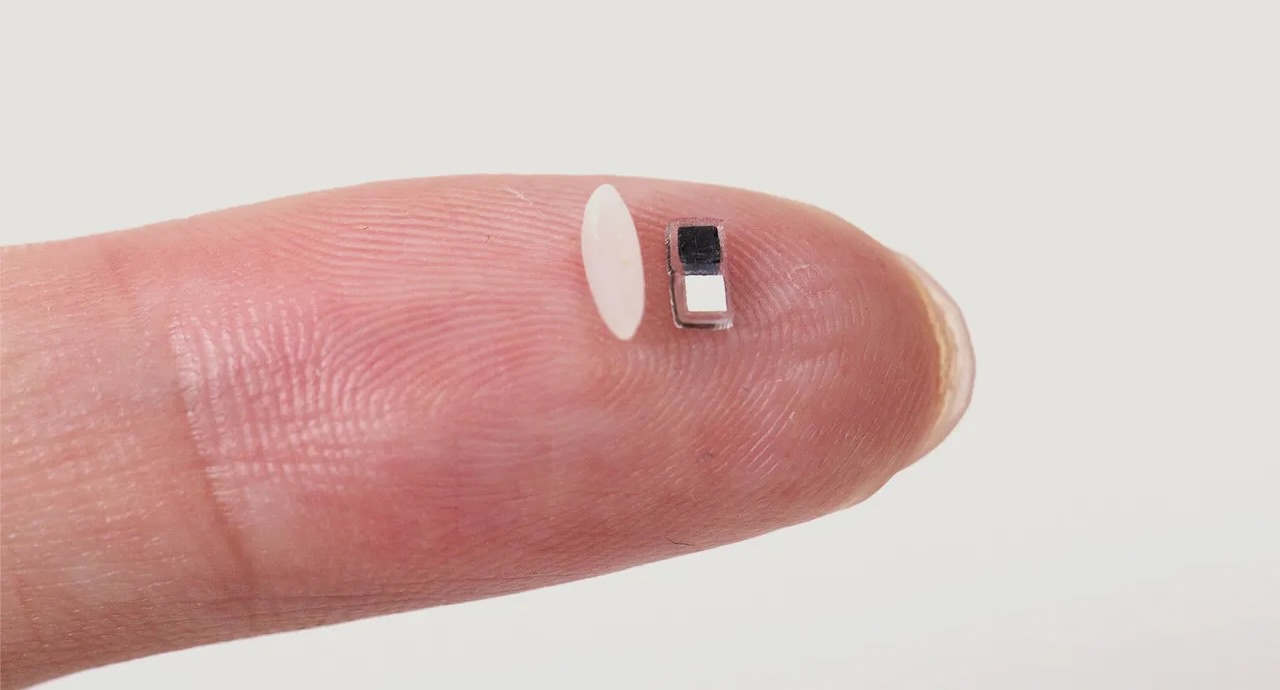Ghoti Ichthus
Genesis 18:32, 2 Chronicles 7:14, Acts 5:29
We're supposed to be salt and light and reflect Jesus. Science shows us our bodies conduct light.
It's going to be amazing when Jesus, as the light of the world, will be literally and visibly reflected in and through us!

"Northwestern University engineers have developed a pacemaker so small that it can fit inside the tip of a syringe and be non-invasively injected into the body, according to a new study published in Nature.
Although it can work with hearts of all sizes, the pacemaker is particularly well-suited to the tiny, fragile hearts of newborn babies with congenital heart defects.
A pacemaker is an implantable device that helps maintain an even heart rate, either because the heart’s natural cardiac pacemaker provides an inadequate or irregular heartbeat, or because there is a block in the heart’s electrical conduction system.
Smaller than a single grain of rice, the pacemaker is paired with a small, soft, flexible, wireless, wearable device that mounts onto a patient’s chest to control pacing. When the wearable device detects an irregular heartbeat, it automatically shines a light to activate the pacemaker.
These short light pulses, which penetrate through the patient’s skin, breastbone, and muscles, control the pacing.
Designed for patients who only need temporary pacing, the pacemaker simply dissolves after it’s no longer needed. All the pacemaker’s components are biocompatible, so they naturally dissolve into the body’s biofluids, bypassing the need for surgical extraction."
"The team used an infrared wavelength of light that penetrates deeply and safely into the body. If the patient’s heart rate drops below a certain rate, the wearable device detects the event and automatically activates a light-emitting diode. The light then flashes on and off at a rate that corresponds to the normal heart rate.
“Infrared light penetrates very well through the body,” Efimov said. “If you put a flashlight against your palm, you will see the light glow through the other side of your hand. It turns out that our bodies are great conductors of light.”"
More

 www.goodnewsnetwork.org
www.goodnewsnetwork.org
It's going to be amazing when Jesus, as the light of the world, will be literally and visibly reflected in and through us!

World’s Smallest Pacemaker is Made for Newborns, Activated by Light, and Requires No Surgery
By Andy Corbley Apr 4, 2025"Northwestern University engineers have developed a pacemaker so small that it can fit inside the tip of a syringe and be non-invasively injected into the body, according to a new study published in Nature.
Although it can work with hearts of all sizes, the pacemaker is particularly well-suited to the tiny, fragile hearts of newborn babies with congenital heart defects.
A pacemaker is an implantable device that helps maintain an even heart rate, either because the heart’s natural cardiac pacemaker provides an inadequate or irregular heartbeat, or because there is a block in the heart’s electrical conduction system.
Smaller than a single grain of rice, the pacemaker is paired with a small, soft, flexible, wireless, wearable device that mounts onto a patient’s chest to control pacing. When the wearable device detects an irregular heartbeat, it automatically shines a light to activate the pacemaker.
These short light pulses, which penetrate through the patient’s skin, breastbone, and muscles, control the pacing.
Designed for patients who only need temporary pacing, the pacemaker simply dissolves after it’s no longer needed. All the pacemaker’s components are biocompatible, so they naturally dissolve into the body’s biofluids, bypassing the need for surgical extraction."
"The team used an infrared wavelength of light that penetrates deeply and safely into the body. If the patient’s heart rate drops below a certain rate, the wearable device detects the event and automatically activates a light-emitting diode. The light then flashes on and off at a rate that corresponds to the normal heart rate.
“Infrared light penetrates very well through the body,” Efimov said. “If you put a flashlight against your palm, you will see the light glow through the other side of your hand. It turns out that our bodies are great conductors of light.”"
More

World’s Smallest Pacemaker is Made for Newborns, Activated by Light, and Requires No Surgery
Although it can work with hearts of all sizes, the pacemaker is particularly well-suited to the tiny, fragile hearts of newborn babies.
 www.goodnewsnetwork.org
www.goodnewsnetwork.org
